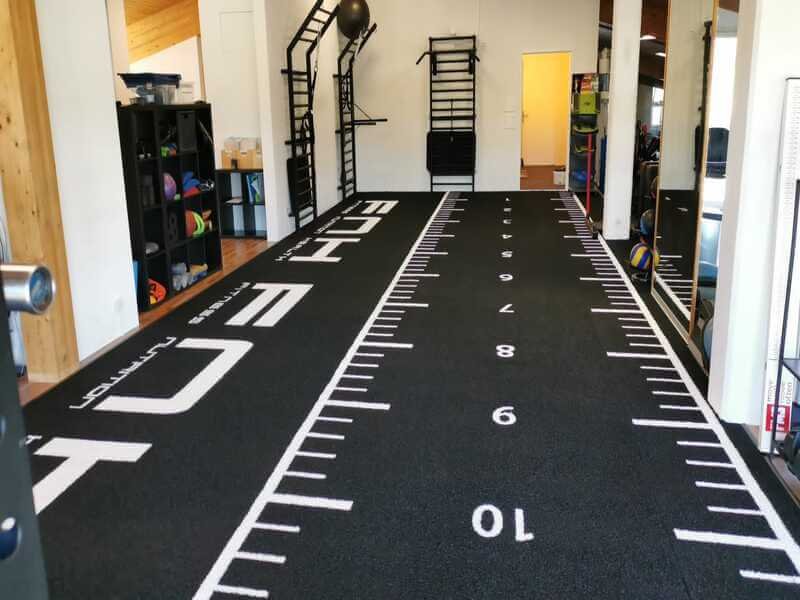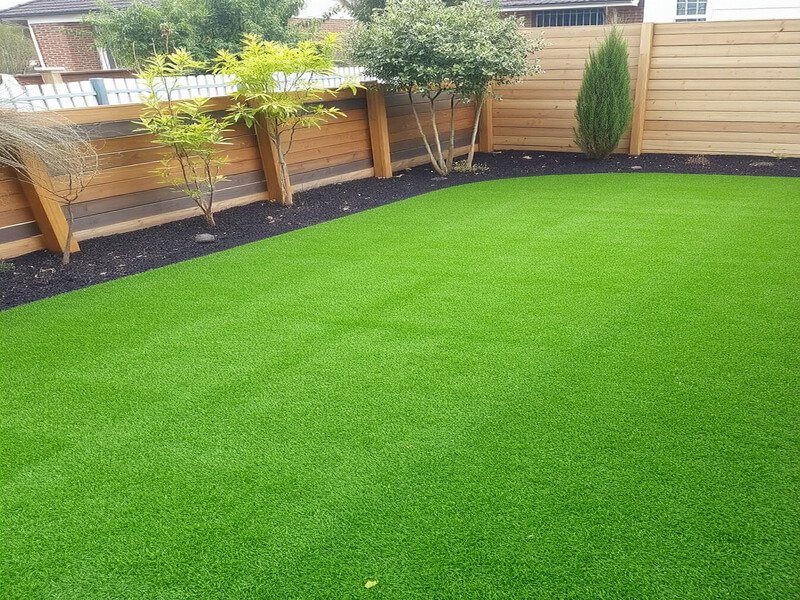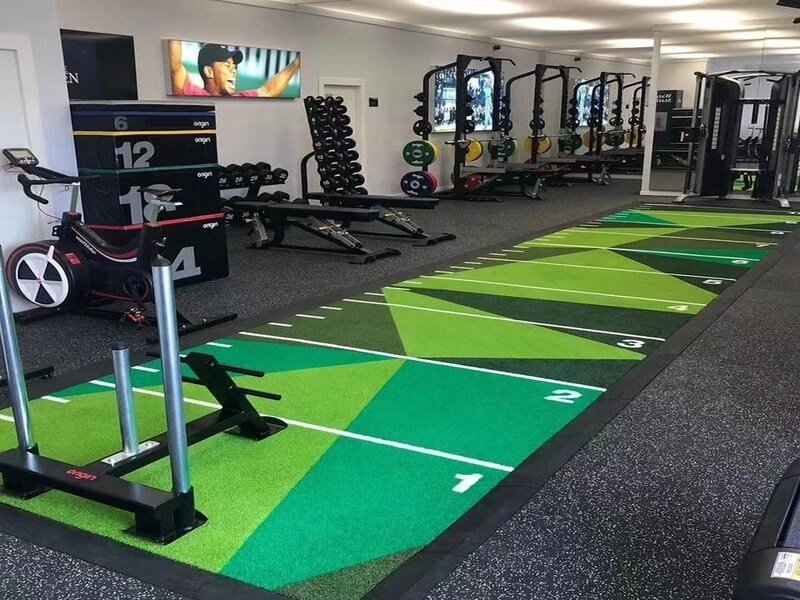Used artificial turf from sports facilities can save you over $2,600 on a 480 sq ft installation. I found quality turf for $1.75 per square foot versus $6.50 for new, cutting my costs by 75% while getting the same training benefits.
After running gyms for over 12 years, I’ve seen artificial turf transform training spaces. It’s perfect for sled pushes, sprints, and agility work. But here’s the problem – new turf costs a fortune. A 480 square foot section runs about $3,500 after taxes. That’s enough to make any gym owner think twice.
I discovered a game-changing solution that saved me thousands. Instead of buying new, I found high-quality used turf from professional sports facilities. This single decision cut my costs by 75% and gave me the exact same training surface I needed.

The key to massive savings isn’t shopping around for deals on new turf. It’s thinking outside the box about where turf comes from and where it goes.
Where Can You Find Quality Used Turf at Fraction of the Cost?
Professional sports fields regularly replace their turf every few years. Contact local football stadiums, soccer fields, and athletic facilities directly. They often sell or give away perfectly good turf that’s being replaced for aesthetic reasons, not performance issues.
I learned this secret from another gym owner who saved thousands using this method. Sports facilities replace turf on schedules, not because it’s worn out. They need perfect appearance for games, but that same turf works great for training.
The Numbers That Changed Everything
Here’s the breakdown that convinced me:
- Used turf: $1.75 per square foot
- New turf (cheapest I found): $6.50 per square foot
For my 480 square foot space:
- Used total cost: $840
- New total cost: $3,120 (before tax) / $3,525.60 (after Canadian HST)
I saved $2,685.60 by making one phone call to our local football stadium. They were happy someone would take it instead of paying disposal fees.
The process was simple. I called three local facilities, explained what I needed, and found available turf within a week. Most were surprised anyone wanted it and charged minimal fees just to cover their removal costs.

This approach works because facilities prioritize appearance over functionality. Turf that looks "old" for TV broadcasts still performs perfectly for training.
Why Choose Flexible Installation Over Permanent Gluing?
Transition strips secure turf edges without permanent adhesive, making it removable for renters. This method provides stable training surface while protecting your investment if you need to relocate your gym.
Most installation guides recommend gluing turf permanently to the floor. That’s fine if you own your building, but I’m in a three-year lease. Permanent installation means losing my entire investment if I move.
The Transition Strip Solution
I used transition strips along all edges instead of glue. These metal strips:
- Hold turf firmly in place during intense training
- Allow complete removal when needed
- Cost under $100 for my entire installation
- Take less time than gluing
The strips create clean edges and prevent tripping. After 18 months of heavy use, including sled pushes and sprint work, the turf hasn’t shifted at all. I can still remove it in under two hours if needed.
This method works especially well for gym owners who rent space. You protect your investment while getting all the benefits of a permanent installation.

The flexibility gives me peace of mind. I can expand, relocate, or reconfigure my space without losing thousands in flooring costs.
What Are the Real Pros and Cons of Used Artificial Turf?
Used artificial turf delivers 90% of new turf benefits at 25% of the cost. Main advantages include massive savings, excellent training surface, and comfort. Drawbacks include existing field markings and limited size options.
After 18 months with my used turf, I can honestly evaluate what works and what doesn’t. The pros far outweigh the cons, but you should know both sides.
The Major Advantages
Massive Cost Savings: This remains the biggest benefit. Saving $2,685 let me invest in other equipment like sleds and agility ladders.
Excellent Training Surface: The turf handles everything I throw at it:
- Sled pushes with 300+ pounds
- Sprint intervals and change of direction drills
- Agility ladder work and cone drills
- Barefoot functional movement
Superior Comfort: Walking barefoot on turf beats tile or concrete every time. Clients notice the difference immediately. It’s easier on joints during high-impact training.
Professional Appearance: The turf transformed my training area from basic to professional. It creates a dedicated space that clients associate with serious training.
The Honest Drawbacks
Existing Field Markings: My turf came with yard lines from a football field. I can’t get solid green like new turf. Some clients ask about the lines, but it doesn’t affect training.
Size Limitations: I needed 6×60 feet but could only find 6×80 feet. I had to buy extra and cut it down, which wasted some material and increased cost slightly.
Limited Color Options: You get whatever color the original field used. No choosing custom colors to match your gym’s branding.

Despite these minor issues, I’d make the same choice again. The money saved was worth the small compromises.
Who Should Consider Buying Second-Hand Turf for Their Facility?
Gym owners with 200+ square feet of training space who want professional surfaces on tight budgets benefit most. Avoid used turf if you need small spaces under 100 square feet or require specific aesthetic matching.
Not every gym owner should buy used turf. It works best in specific situations based on space, budget, and training needs.
Perfect Candidates
Gym Owners on Budgets: If you’re counting every dollar but want professional training surfaces, used turf makes sense. The savings fund other equipment purchases.
Performance Training Facilities: Coaches working with athletes need quality surfaces for speed and agility work. Used turf delivers professional-level training at fraction of the cost.
Large Training Areas: The bigger your space, the more you save. My 480 square feet saved $2,685. A 1,000 square foot space would save over $5,000.
When to Skip Used Turf
Very Small Spaces: Under 100 square feet, the setup effort and minimum purchase sizes make rubber mats more practical.
Brand-Focused Gyms: If your gym’s aesthetic requires specific colors or unmarked surfaces, pay extra for new turf.
Short-Term Locations: If you might move within a year, portable equipment makes more sense than flooring installation.
The sweet spot is medium to large training spaces where you’ll use the turf for several years. That’s where the savings really add up.

Consider your priorities: maximum savings with minor compromises, or perfect appearance at premium prices.
Conclusion
Buying used artificial turf was one of my best equipment investments in 12 years of gym ownership.

![Snapinsta.app 445191752 478646714826702 843145998382058609 N 1080 11[1]](https://meettfit.com/wp-content/uploads/2025/06/Snapinsta.app_445191752_478646714826702_843145998382058609_n_1080_111.jpg)